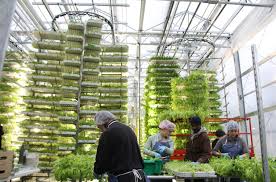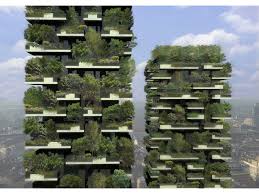|
Notes from New Hampshire
We have been out and about:
National Educators Association - NH
Fall Conference
We were fortunate enough to present to about 20 teachers from around the state. After discussing the importance of agricultural education and what NHAITC can offer teachers, they tried a few activities. They might need their students' help creating a salad in a glove and playing Beefo Bingo! The teachers then explored a variety of curricula available to make many academic areas more enjoyable with agricultural themes.
Londonderry Middle School Career Day
Our thanks to Londonderry Middle School for including us in their 6th grade Career Day. We explored all kinds of careers available in the world of agriculture with over 120 students. I think we found some budding research scientists in the group! Then we were treated to a presentation from Caitlin and Matt Peters of Peters Farm in Salem. Students asked some great questions about food and fiber. We really enjoyed the day.
|
Lesson Links
Below are links to some helpful lessons and activities.
A variety of whiteboard interactive lessons.
| |
|
Visit NHAITC:
New Hampshire Science Teachers Association
Fall Conference
November 2nd & 3rd
Mills Falls
Meredith, NH
New Hampshire Farm Bureau Annual Meeting November 7th and 8th
Fireside Inn & Suites
West Lebanon, NH Geography Awareness Week November 15th Conval High School Peterborough, NH
|
Contacts
Debbi Cox
State Coordinator
nhaitc@nhfarmbureau.org
(603) 224-1934
295 Sheep Davis Road
Concord, NH 03301
Deb Robie,
Grafton County Coordinator
| |
|
|
Why Vertical Farming?
The United Nations predicts a world population increase of over 2.5 billion people by the year 2050. We need to find ways of feeding and clothing so many people with the challenges of increased population, less available space, feedstocks such as corn used for bioenergy and ongoing climate changes.
According to "The Vertical Farm: Feeding the World in the 21st Century" by Dickson Despommier, vertical farming provides solutions to a number of the potential problems facing us. "Vertical farms will allow us to:
- Grow food 24 hours a day, 365 days a year
- Protect crops from unpredictable and harmful weather
- Re-use water collected from the indoor environment
- Provide jobs for residents
- Eliminate use of pesticides, fertilizers, or herbicides
- Drastically reduce dependence on fossil fuels
- Prevent crop loss due to shipping or storage
- Stop agricultural runoff
Vertical farms can be built in abandoned buildings and on deserted lots, transforming our cities into urban landscapes which will provide fresh food grown and harvested just around
 the corner. Possibly the most important aspect of vertical farms is that they can be built by nations with little or no arable land, transforming nations which are currently unable to farm into top food producers."
However, before this approach to farming becomes main stream, a few drawbacks need to be addressed. For instance, if this is to be an insect-free environment, then pollination will need to be done by hand. This labor-intensive technique can be expensive adding on to the already high costs. Electricity, controlling temperatures, irrigation, and construction can add up to a considerable expense. This alone may make it difficult to pursue in some areas of the world.
|
Vertical Hydroponics
Vertical gardening provides a high density food production, both commercially and for the home or school gardener. For commercial growers, a vertical hydroponic system c an be expensive to setup initially, but like other vertical farms, it allows for significant yield in limited space. This example in Singapore uses a water wheel and pulley system to rotate the racks of plants through a trough of nutrient rich water using an amount of electricity similar to a light bulb. As the plants continue to rotate, they are exposed to sufficient sunlight while being protected from the weather in a greenhouse structure. This is certainly a step in the right direction for a country that imports 90% of their food. A video further explaining the system can be found here. an be expensive to setup initially, but like other vertical farms, it allows for significant yield in limited space. This example in Singapore uses a water wheel and pulley system to rotate the racks of plants through a trough of nutrient rich water using an amount of electricity similar to a light bulb. As the plants continue to rotate, they are exposed to sufficient sunlight while being protected from the weather in a greenhouse structure. This is certainly a step in the right direction for a country that imports 90% of their food. A video further explaining the system can be found here.
Vertical home hydroponic systems are becoming more popular due to the space saving feature. With an aquarium pump, some gutter pieces, a wooden frame and a few other supplies, you can turn a home or classroom wall into a year-round salad garden.
|
Vertical Forests
Many urban areas could benefit from the positive effects of a forested area: production of oxygen, absorption of dust particles and carbon dioxide, protection from radiation and scenic appeal.
 Architect Stefano Boeri has found a way to do this in Milan, Italy, one of Europe's most polluted cities. He has designed a vertical forest as part of an apartment complex which is home to over 900 trees. Each apartment has a balcony attached with a garden. Two towers are designed to house the root structures for the trees and additional shrubbery. The towers use wind and solar energy to increase the building's self-sufficiency. Overall, this vertical forest is equivalent to a 2.5 acre forest. Construction costs are only about 5% higher than a traditional skyscraper. The benefits are certainly well worth the cost! Architect Stefano Boeri has found a way to do this in Milan, Italy, one of Europe's most polluted cities. He has designed a vertical forest as part of an apartment complex which is home to over 900 trees. Each apartment has a balcony attached with a garden. Two towers are designed to house the root structures for the trees and additional shrubbery. The towers use wind and solar energy to increase the building's self-sufficiency. Overall, this vertical forest is equivalent to a 2.5 acre forest. Construction costs are only about 5% higher than a traditional skyscraper. The benefits are certainly well worth the cost!
|
|
Classroom Connection
Farm Fountain shows how to create a vertical farm out of 2- liter bottles.
|
|
|